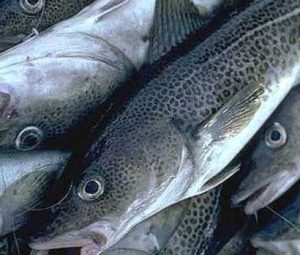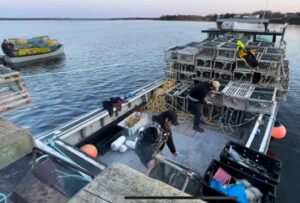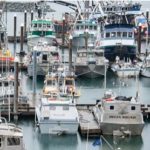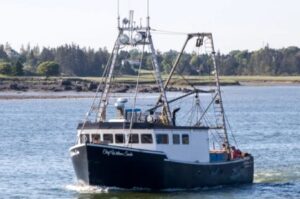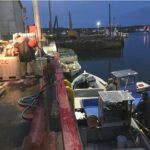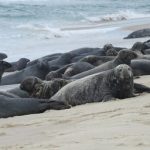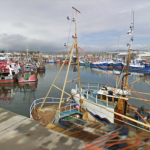Tag Archives: grey seal
Seal overpopulation having ‘significant and damaging impact’ on Canadian fish stocks: report
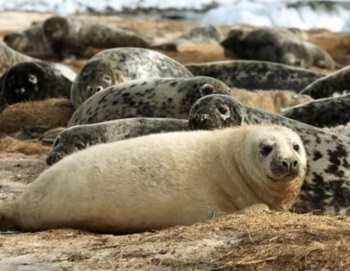 Canadian parliamentarians are warning that seal populations pose a danger to fish stocks and are upsetting marine ecosystems in the Pacific, Arctic and Atlantic oceans. A bipartisan report from the House of Commons standing committee on fisheries and oceans says urgent measures are needed from the federal government and the Department of Fisheries and Oceans, including an increase in the humane seal harvest. “This report’s objective is to draw the attention of DFO, relevant departments and the Canadian government to important observational and empirical evidence that the overpopulation of pinnipeds on Canada’s three coasts is having a significant and damaging impact on the health and conservation of fish stocks and is creating an imbalance in our marine ecosystems,” the study concludes. more, >>click to read<< 18:00
Canadian parliamentarians are warning that seal populations pose a danger to fish stocks and are upsetting marine ecosystems in the Pacific, Arctic and Atlantic oceans. A bipartisan report from the House of Commons standing committee on fisheries and oceans says urgent measures are needed from the federal government and the Department of Fisheries and Oceans, including an increase in the humane seal harvest. “This report’s objective is to draw the attention of DFO, relevant departments and the Canadian government to important observational and empirical evidence that the overpopulation of pinnipeds on Canada’s three coasts is having a significant and damaging impact on the health and conservation of fish stocks and is creating an imbalance in our marine ecosystems,” the study concludes. more, >>click to read<< 18:00
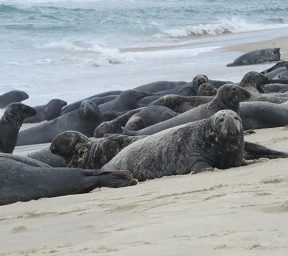
DFO: Atlantic Canada Grey Seal population is slowing
The grey seal population in Atlantic Canada continues to grow and is now estimated at 366,000, according to the 2021 stock assessment released Thursday by the Department of Fisheries and Oceans. But DFO says the population is growing at a much slower rate than in previous years and for the first time in 60 years it is believed pup production has decreased on Sable Island. Scientists used a new model to estimate the population in the latest report. It converted pup production numbers from aerial surveys to total population by combining reproductive and survival rates with the small number harvested by humans. Applying the new modelling to its 2016 estimate produced a sharply lower result. >click to read< 13:44
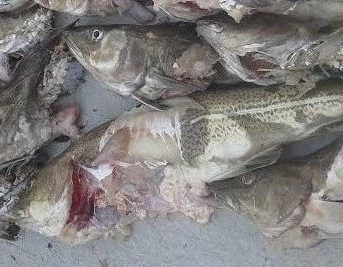
Woefully inadequate – DFO’s science on impact of seal population doesn’t go nearly far enough
Efforts by the Department of Fisheries and Oceans to measure the impact of the massive seal population in Atlantic Canada are “woefully inadequate,” according to a newly released task force report. The industry-led report, which was commissioned by DFO, disputes the department’s claims that, for the most part, seals are not harming fish populations. Industry has long argued that seals are having significant impacts on groundfish stocks, pelagic stocks, shellfish and salmon. >click to read< 09:13
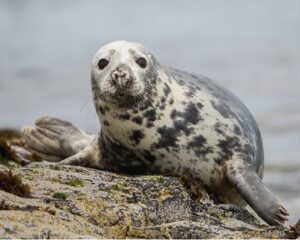
Why Canada shuttered some mackerel and spring herring fisheries in Québec and Atlantic Canada
The announcement by the Department of Fisheries and Oceans to suspend fishing for Atlantic mackerel and spring herring in the southern Gulf of St. Lawrence made waves as the fishing season opened. This decision will have repercussions on the fishing industry at several levels since these species are fished not only for commercial purposes, but are also used as bait in the lobster, snow crab and Atlantic halibut fisheries. The latest stock assessment of Atlantic mackerel and spring herring in the southern Gulf of St. Lawrence revealed high mortality rates among adult fish. In addition to high fishing pressure, the natural mortality of fish by predation also increased rapidly, The grey seal, now 16 times more abundant than in the 1960s, is the main predator of herring. >click to read< 18:38

Newfoundland: A Discussion of the Impact of Seals on Cod Stocks
Those in the industry feel more needs to be done to track the impact seal predation is having on cod stocks in the province. The latest DFO modelling shows 3Ps cod deep in the critical zone, prompting meagre quotas to be cut in half.,, “Most fear if we don’t do anything” Sullivan says, “it’ll be the story of what’s going on with the neighbouring cod stock.” He says scientists working in the Gulf of St. Lawrence noted a few years ago that fishing or no fishing, seals were going to devour all the cod and the species could become extinct. >click to read< 09:10
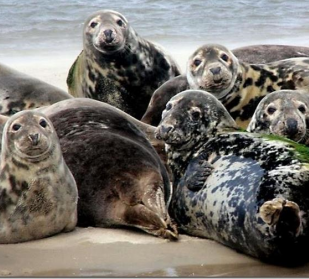
What lives, what dies? The role of science in the decision to cull seals to save cod
Atlantic cod on the Grand Banks of Newfoundland supported one of the world’s greatest fisheries for over three centuries. Yet this seemingly inexhaustible resource is in bad shape. Some stocks are now endangered and their survival could depend on removing a key predator, the grey seal. This raises some difficult questions: How do we determine the value of one species over another, and what is the role of science in this conundrum? My colleagues and I in the Fisheries Economics Research Unit at the University of British Columbia are fascinated by these questions. As an interdisciplinary group of economists, ecologists and social scientists, we commonly attribute values to animals in different ways. >click to read< 16:55
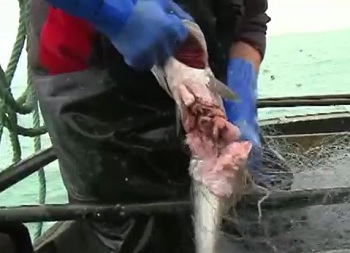
Kerry fishermen renew call for immediate seal cull
The fishermen are operating on the Dingle Peninsula, a region which has one of the largest grey seal colonies in the country. Seals are protected under the EU Habitats Directive and the Wildlife Acts. Conservationists say the Irish colonies of grey seals are of international importance. Dingle fisherman Liam Flannery says that seals are actively following their boats now and that fishing for inshore fishermen like himself is now unviable. >click to read< 14:00
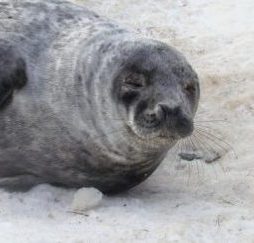
Call for Increased Seal Hunt as Population Surges
Hungry East Coast seal populations have surged in recent decades, spurring calls for an increased seal hunt — and even a possible cull — to protect fragile caplin and northern cod stocks. The Northwest Atlantic harp seal population is estimated at about 7.4 million animals — almost six times what it was in the 1970s, according to the federal Department of Fisheries and Oceans. Grey seal numbers in the Gulf of St. Lawrence have grown from about 5,000 animals in 1960 to an estimated 98,000 in 2014, according to the department. >click to read<16:04

Fisheries Minister Leblanc to make decision on northern cod fishery in April, says seals are a big factor
With cod stocks again on the decline — by a shocking 30 per cent, according to the Department of Fisheries and Oceans (DFO) — the federal fisheries minister says a decision about the fishery will be made within two weeks. Dominic Leblanc said there are a series of factors at play, but one is the grey seal — an animal thought to cause as much as 50 per cent of natural deaths among full-size cod, according to DFO scientists. “There’s no doubt that the seals represent a significant challenge,”,,, >click to read<19:18
Federal government protects overabundant grey seal population over fish stocks
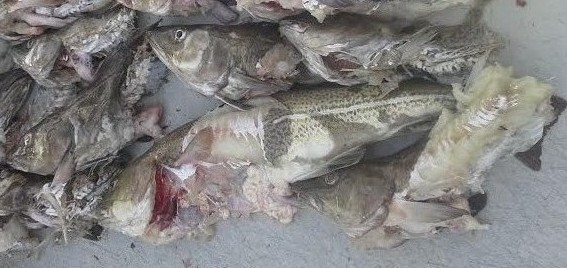 MONCTON, NB – Fish harvesters attending the Gulf Groundfish Advisory Committee this week in Moncton are expressing their frustrations and disbelief over the federal government’s refusal to protect groundfish stocks by controlling the grey seal population. Many species of groundfish will be unable to adequately recover without proper management of the grey seal population. The effect of grey seals on fish populations has been confirmed by scientists, yet the Department of Fisheries and Oceans (DFO) has not taken adequate action to address this problem. An increased harvest of grey seals would aid in allowing groundfish species to rebound, thereby creating new economic opportunities for thousands of families in Eastern Canada. continue reading the press release here 09:08
MONCTON, NB – Fish harvesters attending the Gulf Groundfish Advisory Committee this week in Moncton are expressing their frustrations and disbelief over the federal government’s refusal to protect groundfish stocks by controlling the grey seal population. Many species of groundfish will be unable to adequately recover without proper management of the grey seal population. The effect of grey seals on fish populations has been confirmed by scientists, yet the Department of Fisheries and Oceans (DFO) has not taken adequate action to address this problem. An increased harvest of grey seals would aid in allowing groundfish species to rebound, thereby creating new economic opportunities for thousands of families in Eastern Canada. continue reading the press release here 09:08
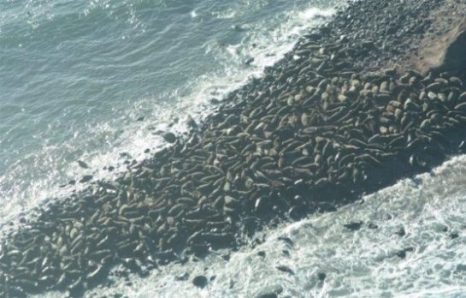
Quebec rejects proposed cull of Brion Island grey seals, to dismay of local biologist
A biologist from the Magdalen Islands is angry the Quebec government has rejected a plan to slaughter 1,200 grey seals on Brion Island, a nature reserve in the archipelago, for scientific research. The grey seal population in the area has ballooned from 400 in 1999 to 10,000 today. The proposal from Dr. Pierre-Yves Daoust, a wildlife veterinarian and pathologist at UPEI’s Atlantic Veterinary College at UPEI, hinged on getting the approval of Quebec’s fisheries and environment ministries. It was rejected last month. Biologist Sébastien Cyr said the proposed cull had the unanimous support of people in the Magdalen Islands. “All the fishermen’s associations had supported the project, the environmental groups as well, the municipality’s residents … There was a consensus in the community for the project,” Cyr said. Read the story here 09:02
Awesome Underwater Footage of a White Shark Eating a Grey Seal
 Researchers at the Atlantic White Shark Conservancy snagged video this week of a white shark swimming with her meal. That’s right, the shark is a she. And she is carrying the remains of a grey seal. The shark was later identified by Marine Fisheries Biologist John Chisholm as an 11-foot female first seen last year. The footage was captured by Greg Skomal of the Massachusetts Division of Marine Fisheries, who used a GoPro. Watch the video here 09:25
Researchers at the Atlantic White Shark Conservancy snagged video this week of a white shark swimming with her meal. That’s right, the shark is a she. And she is carrying the remains of a grey seal. The shark was later identified by Marine Fisheries Biologist John Chisholm as an 11-foot female first seen last year. The footage was captured by Greg Skomal of the Massachusetts Division of Marine Fisheries, who used a GoPro. Watch the video here 09:25
Seal 1, White Shark 0 – a life-loving seal slapped a pursuing great white shark in midair
 Researchers with the Massachusetts Division of Marine Fisheries and the Atlantic White Shark Conservancy said they were out Monday in waters off Cape Cod for a twice weekly great white shark survey when researcher Greg Skomal captured the footage. “The escape was incredible to witness. We’ve seen three predations over the last two years, and this was a first — to watch a white shark leap from the water in an attempt to grab a grey seal. The seal won that battle but shortly after the same shark successfully consumed a different seal further offshore,” Watch, Read the rest here 14:33
Researchers with the Massachusetts Division of Marine Fisheries and the Atlantic White Shark Conservancy said they were out Monday in waters off Cape Cod for a twice weekly great white shark survey when researcher Greg Skomal captured the footage. “The escape was incredible to witness. We’ve seen three predations over the last two years, and this was a first — to watch a white shark leap from the water in an attempt to grab a grey seal. The seal won that battle but shortly after the same shark successfully consumed a different seal further offshore,” Watch, Read the rest here 14:33
Government is considering a plan to address the growing grey seal population
 The report, drafted by the Fur Institute of Canada, is aimed at creating new markets to support an earlier proposal to slaughter 140,000 grey seals over five years in the southern Gulf of St. Lawrence — 70 per cent of the grey seals that frequent the area. Fishermen have long complained that a growing population of grey seals is to blame for eating too many commercially valuable fish, which has resulted in repeated calls for a cull. Awesome. Read the rest here 17:43
The report, drafted by the Fur Institute of Canada, is aimed at creating new markets to support an earlier proposal to slaughter 140,000 grey seals over five years in the southern Gulf of St. Lawrence — 70 per cent of the grey seals that frequent the area. Fishermen have long complained that a growing population of grey seals is to blame for eating too many commercially valuable fish, which has resulted in repeated calls for a cull. Awesome. Read the rest here 17:43
Seal hunt off Nova Scotia dormant as pelt market disappears
 The seal hunt off Nova Scotia’s shores isn’t dead yet, but it’s pretty much dormant, fishermen said Tuesday. If market conditions improve, I’m sure we’ll be back into her.” Courtney said seals eat a lot of fish and Ottawa needs to help fishermen by opening up international markets or instituting a cull. “Basically, we’ve been waiting for the federal government to come out with something to do with the seals, because they’re basically eating us out of house and home,” he said. Read the rest here 13:50
The seal hunt off Nova Scotia’s shores isn’t dead yet, but it’s pretty much dormant, fishermen said Tuesday. If market conditions improve, I’m sure we’ll be back into her.” Courtney said seals eat a lot of fish and Ottawa needs to help fishermen by opening up international markets or instituting a cull. “Basically, we’ve been waiting for the federal government to come out with something to do with the seals, because they’re basically eating us out of house and home,” he said. Read the rest here 13:50
Is the seal hunt dead?
 “See all those grey things?” Hiltz asks, pointing to what we figured were hundreds of big rocks. “Those are seals.” First, let’s address the issue of cuteness. A full-grown grey seal is bigger than any fat man you know, and when you walk up to one, it bares its teeth and makes a noise like the snoring that follows a dozen beer. They defecate prodigiously. continue
“See all those grey things?” Hiltz asks, pointing to what we figured were hundreds of big rocks. “Those are seals.” First, let’s address the issue of cuteness. A full-grown grey seal is bigger than any fat man you know, and when you walk up to one, it bares its teeth and makes a noise like the snoring that follows a dozen beer. They defecate prodigiously. continue


































